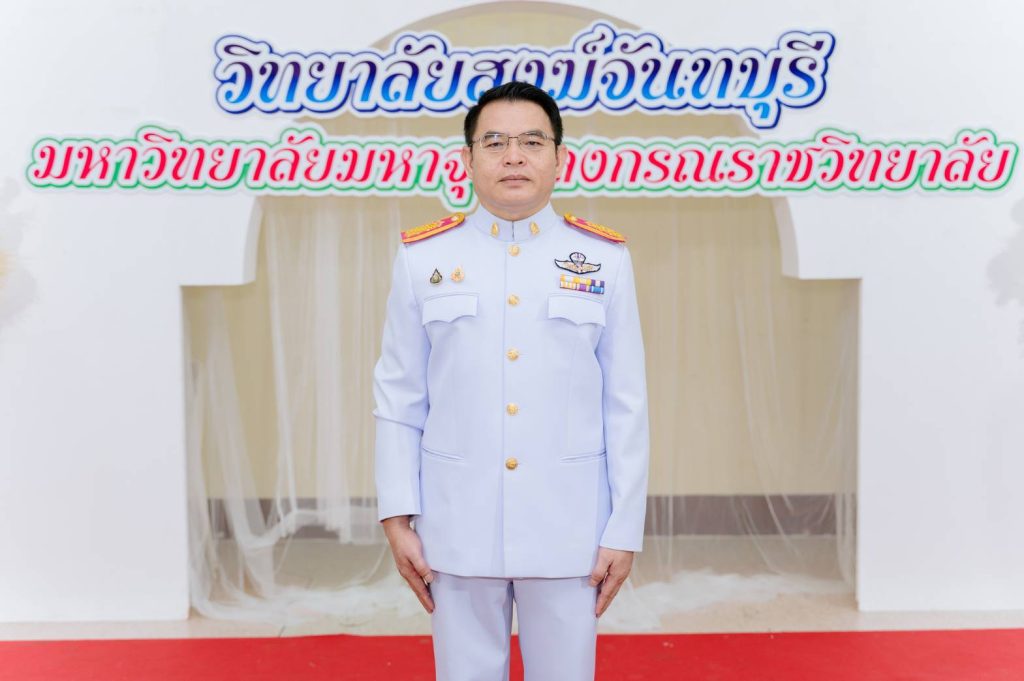การบูรณาการพุทธธรรมเข้าสู่นิติบัญญัติ บริหาร ตุลาการ Integration of Buddhism into the Legislation, Administration and Judiciary
- พระครูสมุห์ชินวรวัตร ถิรภทฺโท,ดร. ดร.ศิรวัฒน์ ครองบุญ ดร.นันทนิษฎ์ สมคิด
- 2563
- บทความวิชาการ
บทคัดย่อ
บทคัดย่อ
บทความนี้มีวัตถุประสงค์ เพื่อศึกษาการบูรณาการพุทธธรรมเข้าสู่นิติบัญญัติ บริหาร และตุลาการ ซึ่งระบบการปกครองในอุดมคติทางพระพุทธศาสนามุ่งเน้นความถูกต้องดีงาม สันติภาพ ภราดรภาพ ส่วนรูปแบบการปกครองไม่สำคัญเท่ากับคุณธรรมในการปกครอง เพราะคุณธรรมของผู้นำเป็นแกนกลางในการปกครอง รัฐในคติทางพระพุทธศาสนาจึงเป็นรัฐที่มีธรรมะเป็นหัวใจที่เรียกว่า ธรรมิกรัฐ ส่วนการได้มาซึ่งอำนาจ การใช้อำนาจ การขยายอำนาจ และการรักษาไว้ซึ่งอำนาจ มิใช่เพื่อความยิ่งใหญ่ของตัวผู้ปกครอง แต่เพื่อประโยชน์สุขของประชาชนส่วนใหญ่ เช่นเดียวกับระบบการบริหารการปกครองของพระเจ้าอโศกมหาราช ที่ทรงยึดมั่นในหลักแห่งธรรมวิชัย คือ การชนะทางด้านจิตใจ เป็นชัยชนะอันสูงสุด เป็นชัยชนะแห่งธรรม ซึ่งเป็นต้นแบบของการเมืองใหม่ที่ใช้ธรรมนำหน้า ที่สามารถเข้าถึงวิถีแห่งสันติ อหิงสา ขันติธรรม และความสงบสุข อนึ่ง พระเจ้าอโศกมหาราชทรงประชาสัมพันธ์ให้ข้าราชการหรือเจ้าหน้าที่ของรัฐอันเป็นผู้กุมกลไกของรัฐ ปรับเปลี่ยนกระบวนการทำงาน และเร่งทำความเข้าใจกับประชาชนให้เข้าถึงนโยบายธรรมวิชัย และพร้อมกับการปฏิรูประบบอำนาจ ที่มาของอำนาจอธิปไตย และทรงใช้พระราชอำนาจของพระองค์เข้าสู่ฝ่ายนิติบัญญัติในการออกพระราชบัญญัติ และการปรับปรุงเปลี่ยนแปลงกฎระเบียบให้มีความสอดคล้องกับหลักธรรมวิชัย ทรงใช้อำนาจทางฝ่ายบริหาร แต่งตั้งคณะรัฐมนตรี และเจ้าหน้าที่อื่นๆ และพระองค์ทรงใช้อำนาจตุลาการให้ข้าหลวงทำงานแทนต่างพระเนตรพระกรรณ ในการตัดสินคดีความโดยยุติธรรมปราศจากอคติ ซึ่งเปรียบเสมือนเป็นรัฐธรรมนูญแห่งรัฐ โดยการประยุกต์พุทธธรรมมาสู่ระบบการบริหารอย่างเต็มรูปแบบโดยยึดหลักความซื่อสัตย์ สุจริต และเสียสละเพื่อส่วนรวม
คำสำคัญ: การบูรณาการ, พุทธธรรม, นิติบัญญัติ บริหาร ตุลาการ
ABSTRACT
The objective was to study the Integration of Buddhism into the Legislation, Administration and Judiciary of which the administrative system in the ideal of Buddhism emphasized on virtuous propriety, peacefulness and fraternity while the format was not as important as the moral since the moral of the leader was the core of administration. State in the model of Buddhism was the state administration with dhamma as the heart namely Dhammigaraja or saint state. The acquisition of power, the utilization of power, the expansion of power and the retaining of power were not for the grandeur of the administrator but for the benefit and happiness of the majority of citizen. It was the same administration system of Ashoke the Great who intent to Dhammavichaya which was mentality winning – the highest winning, the Dhamma winning of which was the model of new administration with Dhamma leading into calm, nonviolence, patience and peaceful. Ashoke the Great had announced to official or state officers who controlled the state mechanism to change the working process and speedy understand citizen and to access Dhammavichaya Principle together with the reorganization of power system to be the sovereignty and exercised his power to legislation in issuing laws and adjusting regulations to be in line with Dhammavichaya. He also utilized his administrative power to appoint ministers and officials, and judiciary power to delegate officers to work on his behalf in judging conflicts with fairness without bias. That was state constitution by applying Buddhadhamma into the whole administration strictly with loyalty, honest and sacrifice for the public.
Keywords: Integration, Buddhadhamma, Legislation, Administration, Judiciary

